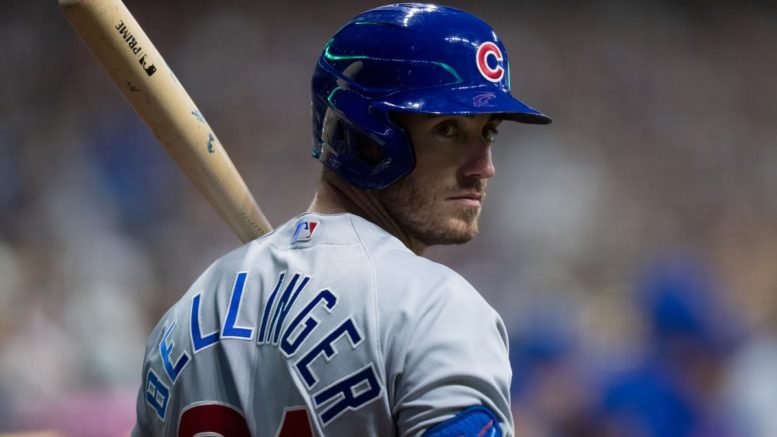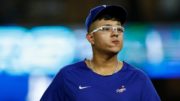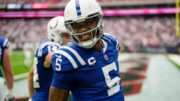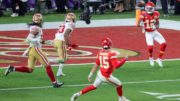On the surface, Cody Bellinger’s life is about to get better no matter what. He was a down-ballot MVP candidate last season who’s heading into free agency, as well as a former MVP and Rookie of the Year. He would have been labeled a unicorn back in the day, given his ability to play Gold Glove-level defense in centerfield and at first base, except that Shohei Ohtani has now redefined what unicorn means in baseball. Bellinger is only 28, and probably still has some prime years left. Normally, this kind of guy would get a fanbase all hopped up on goofballs with the news of his signing.
And Bellinger will get his money. But when reading up on where he might be going, or what he might be getting offered, there’s an undertone of caution or hesitancy, which sounds pretty damn weird for a guy who can play those two positions while slugging .525. And again, at age 28. Cue the Seinfeld voice, “What’s the deal?”
For one, Bellinger only had one good season after the two seasons where he was sadness and despair in human form. Most attributed that to shoulder and knee injuries he picked up in 2020, but he’s still the guy in 2021 who put up a 47 wRC+ and an 83 in 2022. It was u-g-l-y, though Bellinger had an alibi. Still, those seasons aren’t far enough in the past to be forgotten.
There are also some blinking lights about his comeback season with the Chicago Cubs last season. The good is that his power returned. Not to the levels of his ROY or MVP season, but that .525 slugging mark is an antihistamine number (not to be sneezed at! I’ll show myself out). And again, to reiterate, a guy who can provide that kind of power while playing two positions nearly flawlessly is an absolute stone bitch of a player to have. Bellinger was also able to cut his strikeouts down significantly, from over 25 percent in the previous two campaigns to just 15.6 percent last year. Power, defense, discipline at the plate, this is getting pretty appetizing, right?
The problem for some when studying Bellinger is that his contact numbers are just really weird. Because Bellinger didn’t hit the ball very hard at all. His average exit velocity of 87.9 was just the 22nd percentile. His barrel rate was in the 27th percentile. His hard-hit rate was just the 10th percentile. His expected batting average was some 30 points lower than his actual, and his expected slugging was nearly 100 points lower than his actual. It’s odd. Belinger’s BABIP was .319, a career-high and 34 points above his career average. But .319 isn’t some mutated total that is so out of line with the normal .300 you find around the league. It will probably come down, but not in a violent swing. Maybe. Who can predict?
The good news for Bellinger and whoever signs him is that after he returned from a knee injury in June that caused him to miss a month, his exit velocity increased every month from there on out, capping at 89.7 MPH in September. His barrel rate didn’t creep up at quite the same rate, but still improved as he got farther away from that injury layoff.
Another change for Bellinger in 2023 was just how much contact he made, especially in the strike zone. Bellinger made contact on 87 percent of the swings he took on pitches in the zone, a career-high by a distance. He also made more contact on pitches outside the zone than he ever had before. Bellinger’s swing rate was in line with what he’d done in ‘21 and ‘22, but we know what those seasons were. It’s the first time he’d shown that kind of bat-to-ball skills since his MVP season. Is this the new normal or will whiffs come back into his game?
Another warning sign is that high velocity got by Bellinger. During his MVP season in 2019, on fastballs 95 MPH or over, Bellinger hit .278 and slugged .611. Last year? .203 and .362. And his expected numbers suggest he was very lucky to get to even those levels on premium heat. That is not likely to get better as he moves towards and into his 30s. Drop that down measure to 93 MPH or higher, which is pretty much everyone’s fastball outside of Kyle Hendricks, and the numbers tick up to .254 BA and .485 SLG. Can conclude that Bellinger could still get to good fastballs, but anything better and it was a struggle.
On the flip side, Bellinger absolutely murdered off-speed pitches last year, to the tune of a .630 slugging and .458 wOBA. But how many of those is he going to see going forward given what everyone can see he does against plus heat?
The floor on Bellinger is a plus-plus glove combined with, most likely, a representative amount of production at the plate, but short of the star-level that we saw last year. He just doesn’t hit the ball very hard right now. He’ll walk enough and not strike out enough to make that OK. But that pop-gun contact could easily turn into way more outs than it did last year. Or he could sign with the Yankees and just loop 30-35 homers over that dog park fence they put in right field and no one’s going to really care. Put him in Oracle Park 81 times a year and ask him to go to battle against breezes coming in off the cove, and that’s a different story. He also hasn’t proven in a few years now that he can stay healthy for 162.
There are more questions under the surface about splashing out for Bellinger than you might think given the headlines on his baseball card. He’ll get his money for sure, the free agent class just isn’t that good and he stands out. Whether fans of that team are tilting their heads at him in two or three years or sooner…
Follow Sam on Twitter @Felsgate and on Bluesky @felsgate.bsky.social
Original source here
#curious #case #Cody #Bellingers #free #agency





